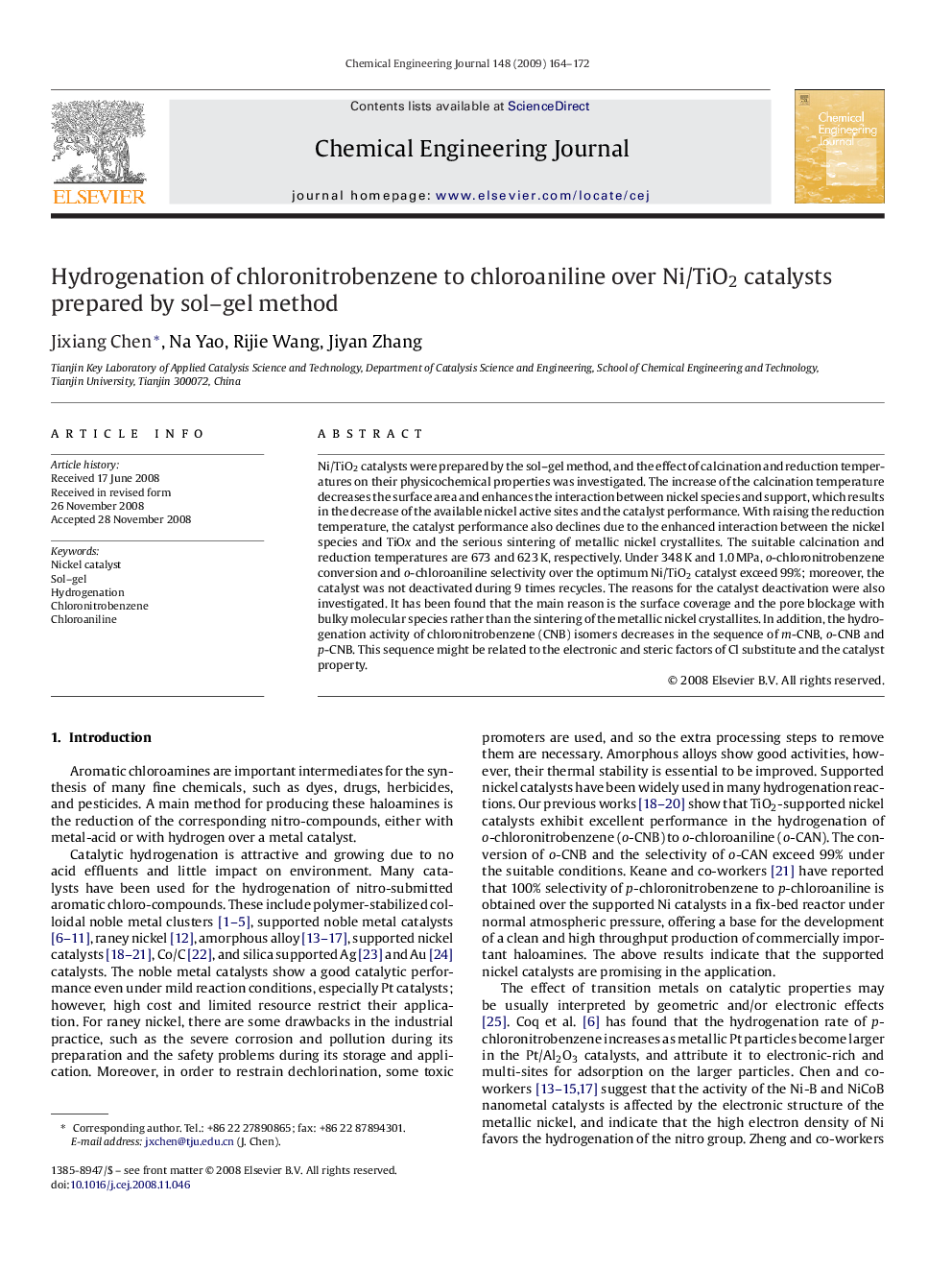| Article ID | Journal | Published Year | Pages | File Type |
|---|---|---|---|---|
| 152625 | Chemical Engineering Journal | 2009 | 9 Pages |
Ni/TiO2 catalysts were prepared by the sol–gel method, and the effect of calcination and reduction temperatures on their physicochemical properties was investigated. The increase of the calcination temperature decreases the surface area and enhances the interaction between nickel species and support, which results in the decrease of the available nickel active sites and the catalyst performance. With raising the reduction temperature, the catalyst performance also declines due to the enhanced interaction between the nickel species and TiOx and the serious sintering of metallic nickel crystallites. The suitable calcination and reduction temperatures are 673 and 623 K, respectively. Under 348 K and 1.0 MPa, o-chloronitrobenzene conversion and o-chloroaniline selectivity over the optimum Ni/TiO2 catalyst exceed 99%; moreover, the catalyst was not deactivated during 9 times recycles. The reasons for the catalyst deactivation were also investigated. It has been found that the main reason is the surface coverage and the pore blockage with bulky molecular species rather than the sintering of the metallic nickel crystallites. In addition, the hydrogenation activity of chloronitrobenzene (CNB) isomers decreases in the sequence of m-CNB, o-CNB and p-CNB. This sequence might be related to the electronic and steric factors of Cl substitute and the catalyst property.
